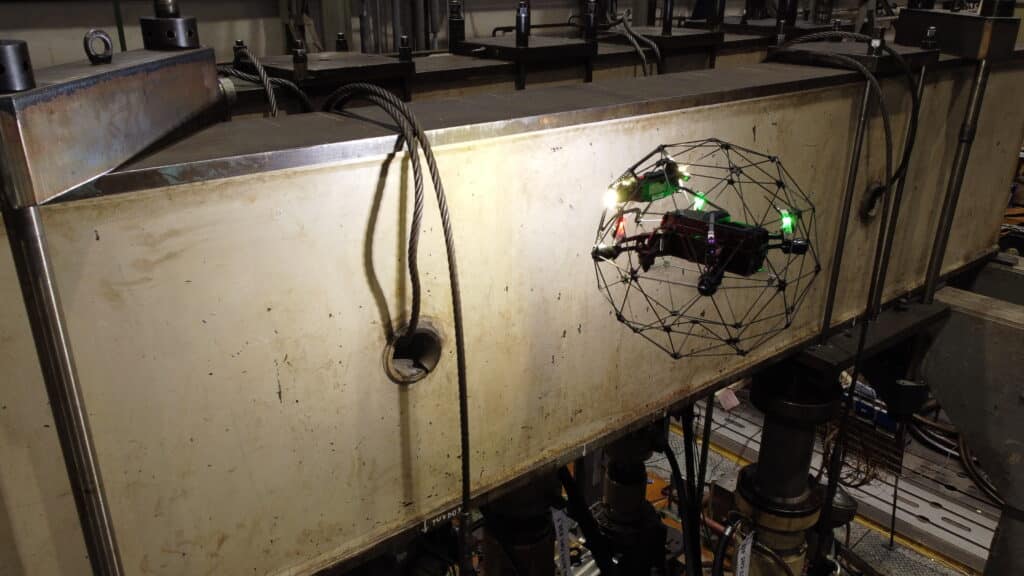We recently received the Elios 2 confined space inspection drone from Flyability, with which VZÚ Plzeň will offer a new service. This involves visual inspections of technology and building structures using an aerial drone that is specifically designed for indoor environments. With the drone, it will be possible to inspect hard-to-reach places such as crane tracks, pipe hangers, or steel structures and their bolted or welded joints. It will even be possible to make passes inside sufficiently large pipes to verify their integrity from the inside. Thermal imaging is also part of the camera equipment, which will make it possible to capture, for example, media leaks from pipeline routes, or where heating is occurring for other reasons. This visual inspection will then be presented to the company’s material specialists who will be able to tell what defect is imminent or has already occurred according to certain indicators and will be able to recommend corrective measures.
The combination of these activities basically brings a completely unique service on the Czech market, which VZÚ will also use for internal needs. In particular, pilot projects are planned on the Dynamic Testing and Hot Spray halls. In the near future we will have a third generation drone from the Elios series, which will replace the Elios 2 drone. This drone has, in addition to all the functionalities of the second generation, one more crucial aspect and that is the on-board lidar. Effectively, this means that the Elios 3 will be able to laser scan its surroundings, essentially mapping the area. It will then be possible to use the system advantageously, for example, in hard-to-reach areas under a steam turbine to locate pipe routes and instrumentation for machine servicing purposes. If we talk about areas outside the energy sector, the drone will find application, for example, in the inspection of high-rise buildings, mine shafts, sewers, cave exploration, etc.
The common denominator of both drones is, in particular, the reduction in the time required to carry out a visual inspection, its cheaper cost due to the elimination of the need to set up an access road and, last but not least, the increase in safety, since every potentially dangerous inspection is carried out by a robot.
You can watch the promo video here: LinkedIn.


